How to start a studio: 18 pro tips
Essential nuggets of advice on how to start a studio from those who’ve been there and done that.
09. Find some natural light
Everyone wants a fancy studio with a hot tub and pool table, but do you really need it? There are larger priorities, says Russell Townsend, managing director at Clusta. "Make sure you have a suitable environment with good natural light and good security, and that it's somewhere you are happy to spend a lot of time in – because you will."
10. Make it a home from home
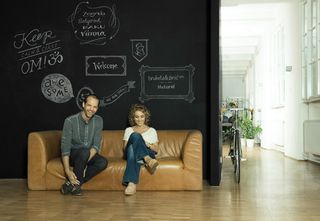
You'll be spending quite a bit of time in your studio, so make it your own. "You should create an environment that you want to spend time in," says Aurelia Lange. "Invest in some good speakers, a comfortable sofa, a kettle and some chocolate biscuits."
11. Don't splurge on furniture…
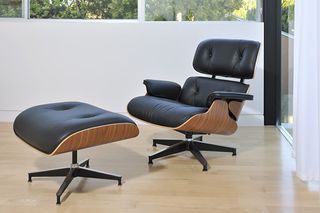
"When you start a studio, designer furniture is not a priority," says Bob Gray, design director at Red&Grey Design. "Our tables and chairs all came from a skip outside a major telephone company that was rebranding. If we were starting out now, we would look out for liquidation sales and office closures."
12. …but a big table is useful
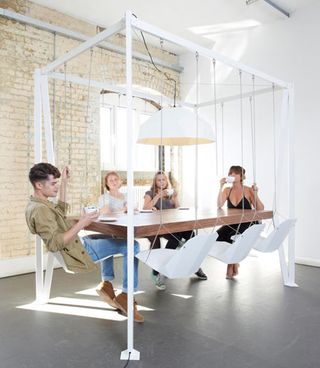
Communal spaces offer many opportunities to pool your talents and bounce ideas around, so it makes sense to capitalise on this when you start a studio, rather than just giving fate a free hand. Nat Hunter, D&AD executive committee member, reveals his office must-have: "A big table for everyone to eat lunch together."
13. Plan how you'll use the space
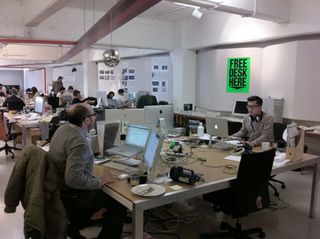
When you start a studio, think about how you would like your space to work for you long term, and what works best for the business. You might want to work in an open-plan space all together with music, laughter and fun.
"However, you need to think how that will work when you've got phone calls to make or you're trying to write a brief – or have clients in," says Josie Harold, managing director of Dirty Design.
14. Design a decent filing system
Without a decent system to help you find older files – real as well as digital – you are simply increasing your workload. Glenn Garriock, creative director at Atelier 1A, is big on filing systems for exactly this reason: "Having a methodical filing system will spare you a lot of rummaging around," he reasons. "You never know when one of your older files or documents could come in handy to sort out a misunderstanding, or help you with your final billing."
Get the Creative Bloq Newsletter
Daily design news, reviews, how-tos and more, as picked by the editors.
15. Set regular back ups from the start
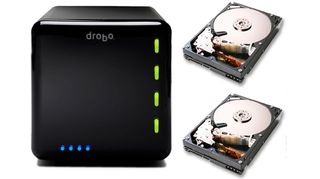
"Back everything up," advises Glenn Garriock, creative director at Atelier 1A. This doesn't have to be expensive – you can pick up a one-terabyte external hard drive for less then £100 these days, on which you can create a bootable carbon copy of your main hard drive. "Couple this with an online back-up service, such as Backblaze or CrashPlan, and you should be sorted."
Also read the 10 best ways to back up your design work
16. Buy the best kit you can afford…
It's true that you get what you pay for, and since a designer's main tool is his or her computer, it pays to get the best you can afford when you start a studio. "As a freelancer, I’m always on my MacBook Pro, which I find sufficient – even for artworking," says Tom Skipp. "And I have also recently subscribed to the iPhone generation, which means that I can respond to people immediately. It's essential to appear available at all times for clients."
17. …but don't overshoot on specs
These days the specs on mid-level machines are generally fine for all but the most demanding of design applications. "So try and make sure that you are very sensible about software and, in particular, hardware," says managing director at Clusta, Russell Townsend. "Assess what you really need. Video and moving images are far more demanding than design for print."
18. Further reading
Learn more about design studios by reading the following articles:
- The challenges of uniting two design studios
- How to manage other designers: 10 expert tips
- Inside the studio: Zim&Zou's colourful and cluttered design space
- Behind the scenes at design studio Cake
- Icelandic design studio takes you back in time
Are you starting your own studio? Share your thoughts and feelings in the comments below!

Thank you for reading 5 articles this month* Join now for unlimited access
Enjoy your first month for just £1 / $1 / €1
*Read 5 free articles per month without a subscription

Join now for unlimited access
Try first month for just £1 / $1 / €1
The Creative Bloq team is made up of a group of design fans, and has changed and evolved since Creative Bloq began back in 2012. The current website team consists of eight full-time members of staff: Editor Georgia Coggan, Deputy Editor Rosie Hilder, Ecommerce Editor Beren Neale, Senior News Editor Daniel Piper, Editor, Digital Art and 3D Ian Dean, Tech Reviews Editor Erlingur Einarsson and Ecommerce Writer Beth Nicholls and Staff Writer Natalie Fear, as well as a roster of freelancers from around the world. The 3D World and ImagineFX magazine teams also pitch in, ensuring that content from 3D World and ImagineFX is represented on Creative Bloq.
